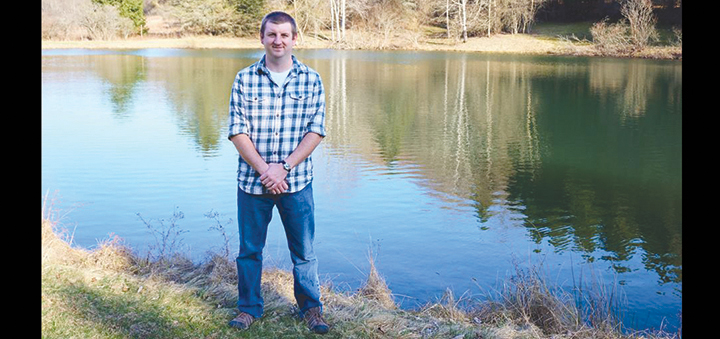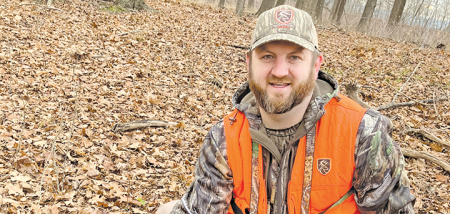Turkey Calls 101
Published:
April 20th, 2022
By:
Eric Davis

With the Youth Turkey Hunt happening this weekend, then the regular season opening on May 1, it is time to break out your calls to see if any of them will need any special attention or need to be replaced.
It may also be a hunters first time trying to turkey hunt so they need to stock up to be ready. Last weekend I gave a demonstration at the Chenango County Youth Turkey Hunt safety day and I think the topic is worth sharing again.
I think of turkey calls as falling into two categories based on how they produce their sounds. I lump push pin, box, and pot calls into the “friction” group. Diaphragm calls, wing bone calls, and gobble tubes go into the “air” group. Each type of call has pros and cons.
Push pin or push button calls are the easiest calls to learn to use. A caller can easily produce clucks, purrs, and yelps. To use the call, you need to use one hand and make some movement which can give away your location to any incoming turkeys. There are some models available that can strap onto the underside of your shotgun barrel or onto your leg and a piece of string is used to operate the call. Most push pin calls are only made of wood and they don’t work well after getting wet. They also can be more muted than other calls so they work best for close to medium distance calling.
Box calls are a little more difficult to master than the push pin but they are still easy to learn to use. A box call is made up of a lid or paddle, and a bottom where a resonance chamber helps amplify the sounds. They come in different shapes and sizes, which changes the tone and pitch of the sounds being produced.
Long box calls, sometimes called boat paddles, produce higher pitched sounds which cut through high winds. Most box calls are wooden and require a thin amount of chalk to be applied to the lid to make them produce the best sounds. The chalk is different than classroom chalk. Box call chalk contains no wax. Like push pin calls, most box calls don’t work once they get wet. There are waterproof box calls on the market. Another “old timer” trick is to carry your box call in a bread bag. This size of bag lets you operate the call and the sound still comes through the bag.
Pot calls are made of a surface and a resonance enhancing base. A striker is used on the call surface to produce sound. The call portion can be made of a few different materials, such as slate, aluminum, or crystal. Slate produces a softer tone but doesn’t work when wet. Aluminum is higher pitched but it works when wet.
Crystal is commonly referred to as the best all-around option as it produces sounds from soft to loud and works when wet. The striker material makes a difference in the sounds produced and how well it works when wet. Wood strikers can make soft, realistic sounds but don’t work well when wet. Carbon strikers work when wet but might not sound as realistic as wood strikers do. Again, because the call relies on moving pieces, there is motion when using the call. There are some products available that let you strap the pot call to your leg so it only requires one hand to operate instead of two.
Diaphragm calls, or mouth calls, are made of latex reeds pressed inside a metal frame. The frame is then put inside a material that is better for your mouth. Diaphragm calls are much harder to learn to use than any of the friction calls, in my opinion. They can come in two-reed or three-reed options plus there can be different patterns cut into the top reed.
Hunters can produce all the sounds of the hen with a diaphragm call and can cover a wide range in tone and volume. One of the greatest advantages of the diaphragm call is the ability to call hands-free. The lack of motion helps you stay hidden. This allows the hunter to get their firearm into position as the turkey is approaching. If you are new to using a diaphragm call, start out with a simple two-reed with no cuts in the reeds.
Wing bone calls are made of the wing bones from a turkey. It is more of an artistic feature than a practical call. However, with a fair amount of practice, you can make realistic yelps and clucks with it. Wing bone calls are fragile and can easily break or have the sections separate.
Gobble tubes use a series of baffles to create a sound of a jake or tom gobbling. At times, this is the only thing that can get birds to gobble. However, mimicking the sound of a gobbling turkey can put a hunter into an unsafe scenario. So, if you choose to use a gobble call, use extreme caution.
No matter what type of call you choose to use this spring, take time to practice before hitting the woods. As always, be safe and remember to identify your target and what is beyond it before shooting.
Author: Eric Davis - More From This Author
Comments



